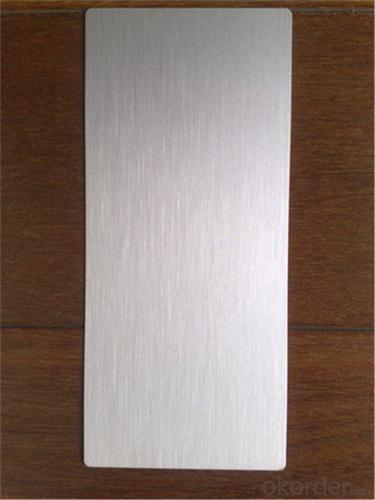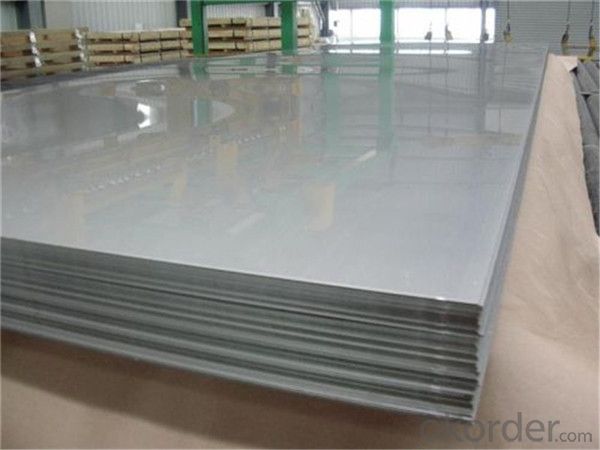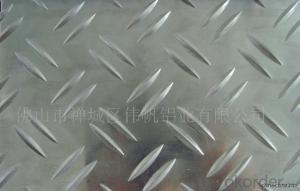Rolled Aluminum Roofing Sheets Price - High Quality Aluminum Sheet 1100 3003 5052 5754 7075 Metal Alloy Manufactured in China
- Loading Port:
- Shanghai
- Payment Terms:
- TT OR LC
- Min Order Qty:
- 5 m.t.
- Supply Capability:
- 100000 m.t./month
OKorder Service Pledge
OKorder Financial Service
You Might Also Like
Specification
Packaging & Delivery
Packaging Details: | Standard export packing or following customer's demand |
Delivery Detail: | Within 20-25days or according to the order quantity |
High Quality and Factory Price Aluminum Coil
Specifications
Grade
| 1000 Series: 1050 1060 1070 1100 1200 1235 etc. 3000 Series: 3003 3004 3005 3104 3105 3A21 etc. 5000 Series: 5005 5052 5083 5086 5154 5182 5251 5754 etc. 6000 Series: 6061 6063 6082 6A02 etc. 8000 Series: 8006 8011 8079 etc. |
Thickness | 0.05~10mm |
Width | <1600mm< span=""> |
Color | Metallic, Solid, RAL or by customer requirements |
Coating paint: | PVDF(Polyvinylidene Fluoride), PE(Polyester ) |
Coating thickness | as per customer’s request |
Gloss | 10-90%(EN ISO-2813:1994) |
Total coating thick | Polyester18~27micron(EN ISO-2360:1995) PVDF27 ~35micron(EN ISO-2360:1995) |
Coating hardness | 2H |
Protective film | PVC film, Colorless transparent or White-black |
Adhesion | 5B (EN ISO-2409:1994) |
Impact resistance | No cracking and peeling (A.S.T.M D2794-1993) |
Flexibility (T-bend) | 0T- 2T |
Temper | H16, H18, H24, H26, H26 |
Certification | ISO9001:2000, CE, SGS |
Coil's standard diameter | 1100mm |
Inner Diameter | 405mm/505mm |
Coil's standard weight | 2000kgs |
Payment | L/C ,T/T |
Parameter
Product | Alloy | Temper | Thickness | Width | I.D(mm) | Application |
Aluminum Coil/Strip | 1050,1060,1070, 1100,1200,1235, 1145,3003,304, 3105,3A21, 8011 | O H12 H14 H16 H18 H22 H24 H26 | 0.2-8mm | 50-2400mm | 75,150 200,300 400,505 (as customers's request) | construction,decoration, automobile,electronic, machinery,boat construction, aeronatics&astronautics, cookware,packing etc. |
Application:
1) Radiator
2) Condenser
3) Insulation Material
4) Construction
5) Decoration
6) Advertisement and market applications
Photos




- Q: im about to get a grinder online, and i dont know if i should get an aluminum one, or a non aluminum one. cuz i dont know what non aluminum grinders are made out of. thanks
- Aluminum is a good choice if you plan on using it to grind more than just coffee. Plastic tends to soak up flavors due to oils in coffee, herbs and spices. So if you plan on multitasking metal is the way to go.
- Q: This question asks for a comparison between aluminum sheets and other types of sheet metal regarding their strength and durability.
- <p>Aluminum sheets are known for their high strength-to-weight ratio, making them lighter than many other sheet metals such as steel. They offer excellent corrosion resistance, which contributes to their durability. However, in terms of sheer strength, aluminum is not as strong as steel or titanium. Steel is stronger but also heavier, and while titanium is very strong and durable, it is also more expensive and less commonly used in construction and manufacturing. Aluminum's malleability allows it to be easily shaped and formed, and it is also non-magnetic and has good thermal conductivity. Overall, aluminum is a popular choice for applications requiring a balance between strength, weight, and resistance to corrosion.</p>
- Q: What kind of paint would you like to paint on the aluminum plate?
- Nitro paint, polyester paint can be mainly your base, you should use atomic ash treatment before you can use, otherwise it will peel off
- Q: What is the surface finish of 101 aluminum sheets?
- The surface finish of 101 aluminum sheets can vary depending on the manufacturing process and desired application. Common surface finishes for 101 aluminum sheets include mill finish, brushed finish, and polished finish.
- Q: What are the different methods of surface printing aluminum sheets?
- There are several different methods of surface printing aluminum sheets, each with its own advantages and applications. Some of the common methods include: 1. Screen Printing: This is a popular technique where a mesh screen with a stencil of the desired design is used. Ink is then forced through the open areas of the stencil onto the aluminum sheet. Screen printing allows for high precision and vibrant colors, making it suitable for various applications such as signage, labels, and decorative purposes. 2. Digital Printing: With advancements in technology, digital printing has become a popular method for printing on aluminum sheets. This method uses inkjet technology to directly print the design onto the surface of the sheet. Digital printing offers high detail and a wide range of colors, making it suitable for customized and complex designs. 3. Offset Printing: Offset printing is a versatile method often used for high-volume production. It involves transferring the design from a plate onto a rubber blanket, which is then pressed onto the aluminum sheet. This technique provides consistent and accurate printing results and is commonly used for packaging, labels, and large-scale printing. 4. Flexographic Printing: Flexographic printing is a cost-effective method commonly used for printing on flexible materials, including aluminum sheets. It involves using flexible relief plates with the desired design, which are then pressed onto the sheet. Flexographic printing is suitable for large-scale production and is often used for packaging materials and labels. 5. Gravure Printing: Gravure printing, also known as rotogravure printing, is a method that uses engraved cylinders to transfer ink onto the aluminum sheet. This technique is known for its high quality and ability to reproduce fine details. Gravure printing is commonly used for high-end packaging, decorative items, and high-resolution images. 6. Embossing: While not technically a printing method, embossing is a popular technique used to create raised designs or patterns on aluminum sheets. This can be done through mechanical or heat processes, creating a three-dimensional effect. Embossed aluminum sheets are often used for decorative purposes, architectural applications, or to enhance the grip on surfaces. These are just some of the methods used for surface printing aluminum sheets. The choice of method depends on factors such as the desired design, level of detail, quantity, budget, and intended application.
- Q: after putting aluminum sheet into the area between magnet and iron products, could magnet attract iron again?
- magnet can attract iron if the aluminum sheet isn't too thick. Because aluminum can't cut off magnetic line of force, unless aluminum sheet's thickness surpass the range of magnetic attraction.
- Q: Are the aluminum sheets suitable for HVAC (heating, ventilation, and air conditioning) applications?
- Aluminum sheets are indeed suitable for HVAC applications, as they possess excellent thermal conductivity, corrosion resistance, and are lightweight. The HVAC industry widely favors aluminum due to these attributes. In HVAC systems, these sheets find common use in ductwork, heat exchangers, and air handling units. When it comes to heating applications, aluminum sheets efficiently transfer heat and can withstand high temperatures. Moreover, their resistance to corrosion ensures long-term durability, particularly in moist environments like air conditioning systems. Furthermore, the lightweight nature of aluminum sheets simplifies installation and reduces the overall weight of HVAC equipment. Overall, aluminum sheets prove to be a reliable and versatile material for various HVAC applications.
- Q: Are the aluminum sheets suitable for automotive applications?
- Yes, aluminum sheets are suitable for automotive applications due to their lightweight, corrosion resistance, and high strength-to-weight ratio, making them ideal for improving fuel efficiency and performance in vehicles.
- Q: Can aluminum sheets be anodized without affecting their dimensions?
- Aluminum sheets can undergo anodization without significantly impacting their dimensions. Anodization is an electrochemical procedure that produces a protective oxide layer on the aluminum's surface, enhancing its resistance to corrosion and durability. To perform anodization, the aluminum sheet is immersed in an acidic solution while an electric current is passed through it. This causes the aluminum to oxidize, resulting in the formation of an aluminum oxide layer on the surface. Throughout the anodization process, the aluminum oxide layer grows both inward into the metal and on the surface. The growth of the oxide layer can be precisely controlled by adjusting the duration of the anodization process to achieve the desired thickness. Consequently, the dimensional changes induced by anodization are minimal and can be easily accommodated during the design phase. Nevertheless, it is worth noting that anodization can lead to a slight increase in the thickness of the aluminum sheet. This is due to the growth of the oxide layer on the surface. Typically, the increase in thickness is approximately 50% of the overall thickness of the oxide layer. For instance, if the desired oxide layer thickness is 10 micrometers, the resulting increase in sheet thickness would be approximately 5 micrometers. In conclusion, anodizing aluminum sheets can result in a slight increase in thickness, but the dimensional changes are negligible and can be accurately predicted and taken into account during the design phase. Anodization is a widely used and effective method for enhancing the properties of aluminum sheets without significantly altering their dimensions.
- Q: This question asks for the various dimensions in which aluminum sheets can be obtained.
- <p>Aluminum sheets are available in a variety of sizes depending on the manufacturer and the specific application. Common sizes include 12x12 inches, 24x24 inches, 4x8 feet, and 4x10 feet. Thickness can range from 0.010 inches (0.25 mm) for thin sheets to 0.5 inches (12.7 mm) for thicker plates. Custom sizes can also be ordered, and the availability of these sizes may vary by supplier. It's important to check with the specific supplier for the exact sizes they offer, as options can differ.</p>
Send your message to us
Rolled Aluminum Roofing Sheets Price - High Quality Aluminum Sheet 1100 3003 5052 5754 7075 Metal Alloy Manufactured in China
- Loading Port:
- Shanghai
- Payment Terms:
- TT OR LC
- Min Order Qty:
- 5 m.t.
- Supply Capability:
- 100000 m.t./month
OKorder Service Pledge
OKorder Financial Service
Similar products
Hot products
Hot Searches
Related keywords




























